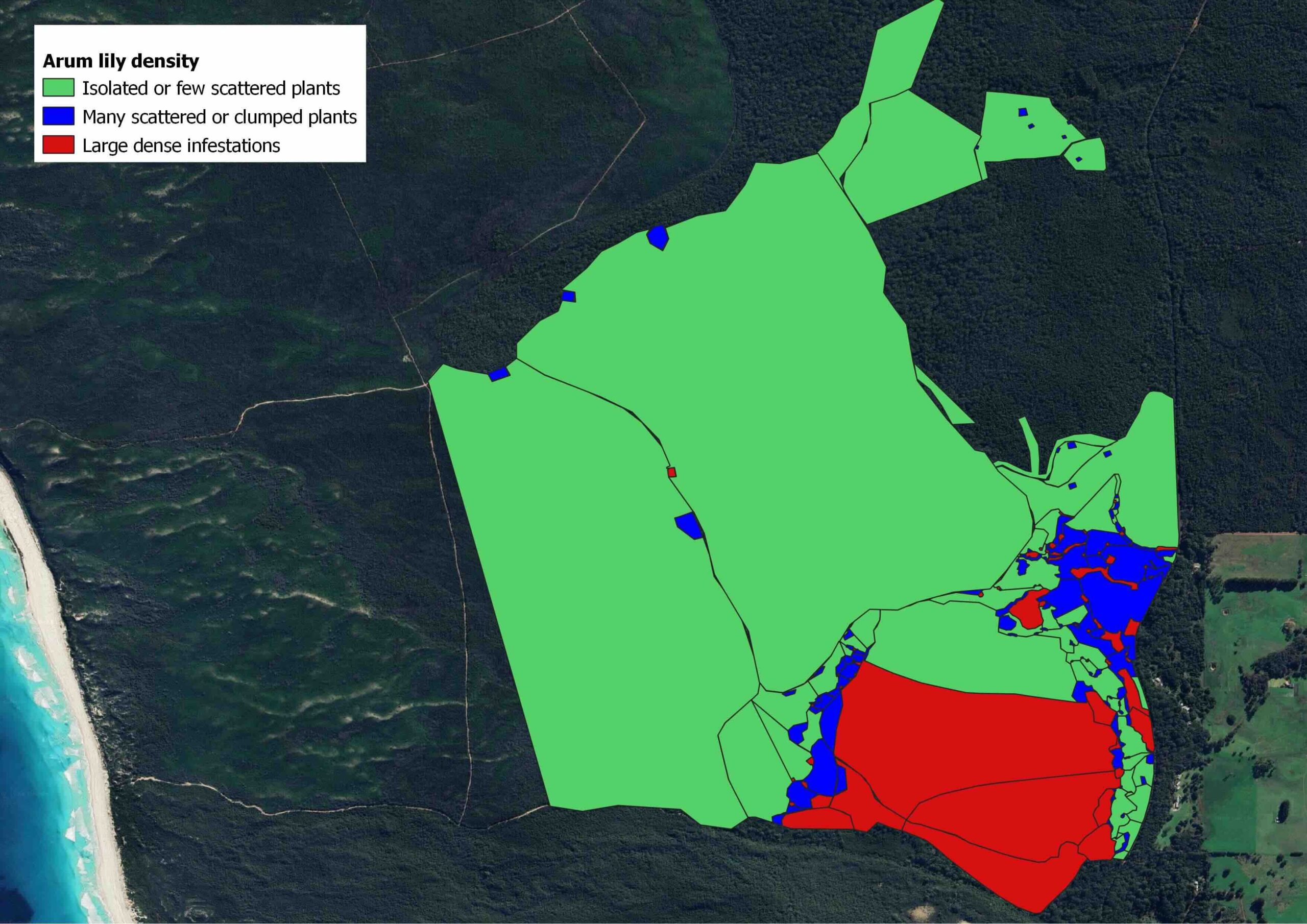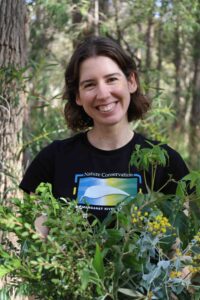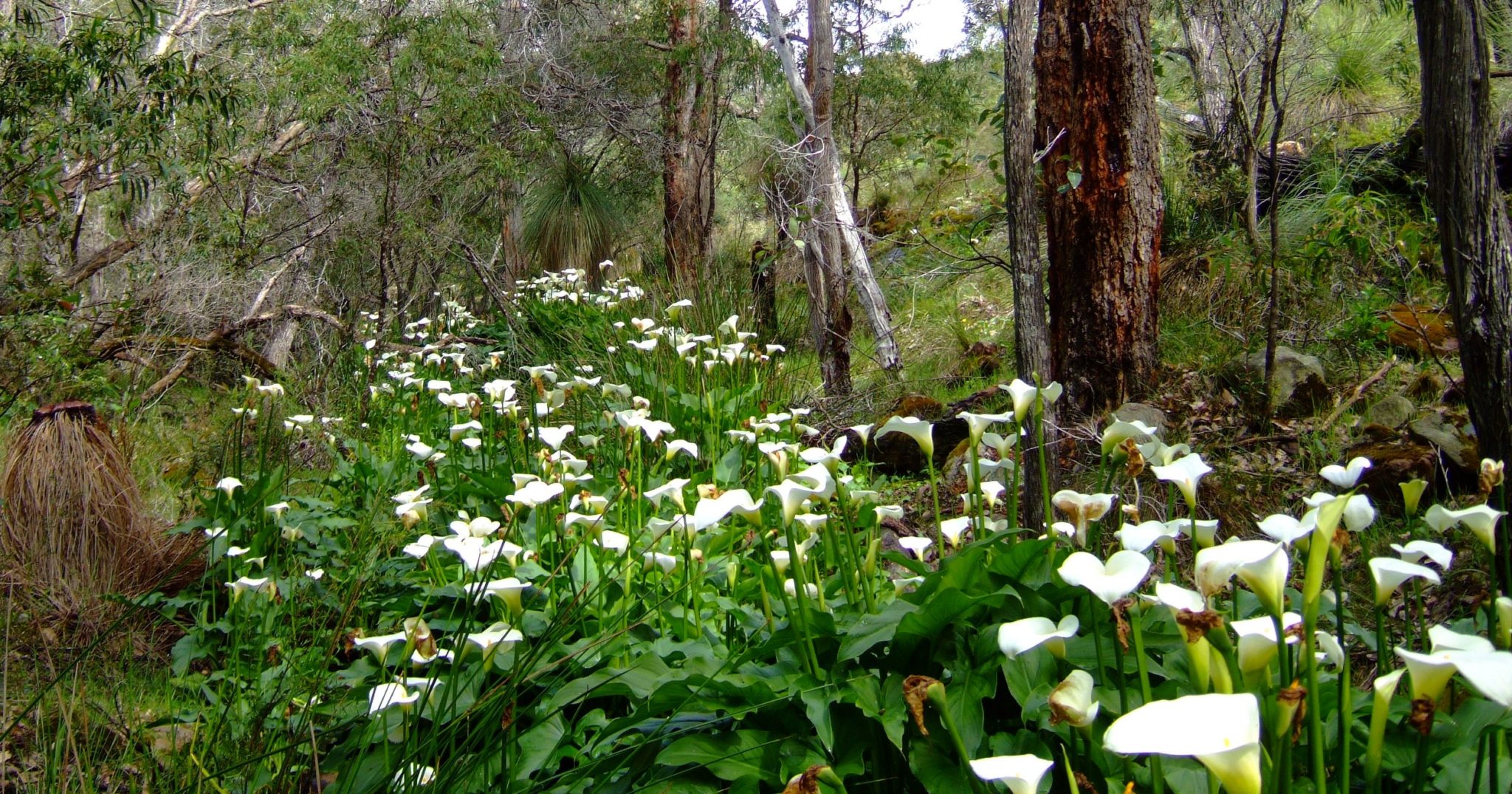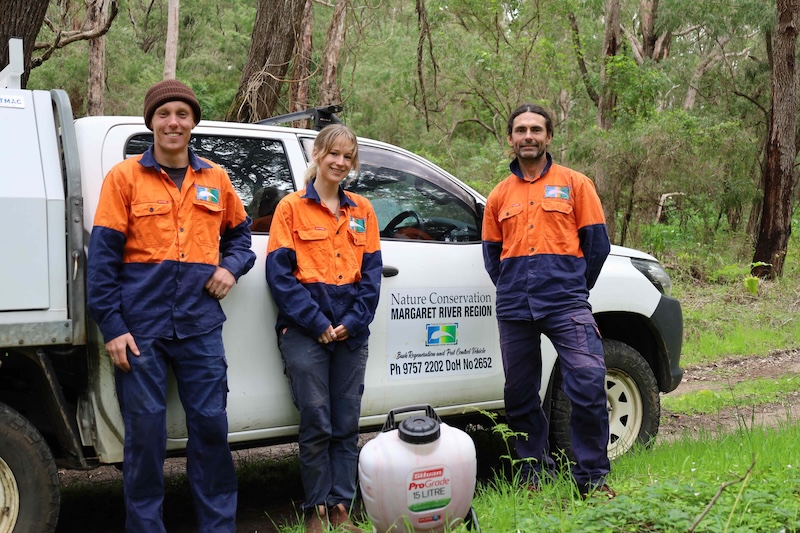Driving through the southern end of Boranup forest at this time of year and seeing carpets of arum lilies can be very disheartening – but there is hope. Many people make the sad assumption that this heavy infestation extends throughout much of the Boranup forest.
But an extensive mapping survey – funded by the Department of Biodiversity, Conservation and Attractions (DBCA) – paints a different picture.
In spring 2024, contracted by DBCA, Nature Conservation Margaret River Region staff and volunteers mapped the extent and density of arum lily across a massive 831 hectares of Boranup forest. The results demonstrate that, whilst approximately 150 hectares of the southern Boranup forest is heavily infested with arum lily, more than 80 per cent of the mapped area – or a precious 674ha – is primarily arum lily free.

This map shows a noose around the worst of the arum lily infestation in the southern Boranup Forest
Arum lily is an environmental weed that outcompetes native plants, reduces habitat and food for wildlife, smothers orchids and wildflowers, and swamps understory in a toxic monoculture.
But since 2019, DBCA and Nature Conservation have been working together with limited resources to undertake strategic control of arum lily in Boranup. The main aims for control have been protection of good quality vegetation, and prioritising control in breakout infestations, areas of light to medium infestation, and where natural regeneration is expected.
Nature Conservation’s Arum Lily Blitz officer Obelia Wallker said the mapping “gives us all a clear picture of the arum lily infestation throughout Boranup forest” and is helping to shape “development of a control plan and monitoring of change over time.”

Nature Conservation’s Arum Lily Blitz coordinator Obelia Walker
She said significant funding would be needed to address the dense southerly infestation but, as a minimum, containment to protect surrounding good quality vegetation has been identified as a priority.
Successful control of arum lily in Boranup forest has been demonstrated at several key sites since 2019, including 23ha at the Point Rd campsite area and 45ha at Kodak Corner on Caves Rd.
Monitoring has shown that the shaded forest environment is conducive to successful control, provided best-practice follow up is undertaken over several years.
“We’d like to see greater recognition at a State Government level of the threat posed by this weed,” said Obelia.
“Significantly more resourcing is needed to effectively control arum lily throughout Boranup, to buffer the large infestation in the south and prevent potentially irreversible degradation to the forest. We know that arum lily thrives in this sheltered karri forest environment, and if left unmanaged, it will continue to spread and infest new areas. The 2024 DBCA mapping project has provided the data needed to develop a comprehensive control plan.”
As well as the work in Boranup forest, this year’s Arum Lily Blitz also includes a push to reach new priority landholders in key areas needing arum lily control, supply free herbicide to all landholders, and help with the roll out of the Blitz model to neighbouring shires including Busselton, Capel and Bunbury – which will expand 10-fold the area where the plants are being controlled.
The wide-leafed plants start appearing from underground tubers from June and produce a white flower in spring, and large-scale control is only possible with a targeted herbicide.
Now in its 7th year, the Arum Lily Blitz is the first coordinated, landscape-scale weed control program of this type in WA, with an ambitious, long term 20-plus year vision to reduce and contain the weed.

An arum lily infestation
“Success relies on persistence and teamwork. So spread the word to your neighbours, be an advocate, and share your arum lily control success stories with us, your friends and family, and on social media,” says Obelia.
For landholders on larger properties who cannot deal with arum lily infestations on their own, Nature Conservation’s Bush Regeneration Team can be hired to carry out arum lily control.
For landholders registered with the Blitz, free herbicide can be collected from the Nature Conservation office as well as from supporting businesses Pendrey Rural Supplies, Busselton Agricultural Services, Dunsborough Rural, Vasse General Store, Cowaramup Agencies, Nutrien Ag Solutions in Margaret River, Karridale Agencies and Augusta Home Hardware.
The Arum Lily Blitz is funded by the WA Government’s State Natural Resources Management Program. See www.natureconservation.org.au to find out more, register, and receive free herbicide, information and resources.

